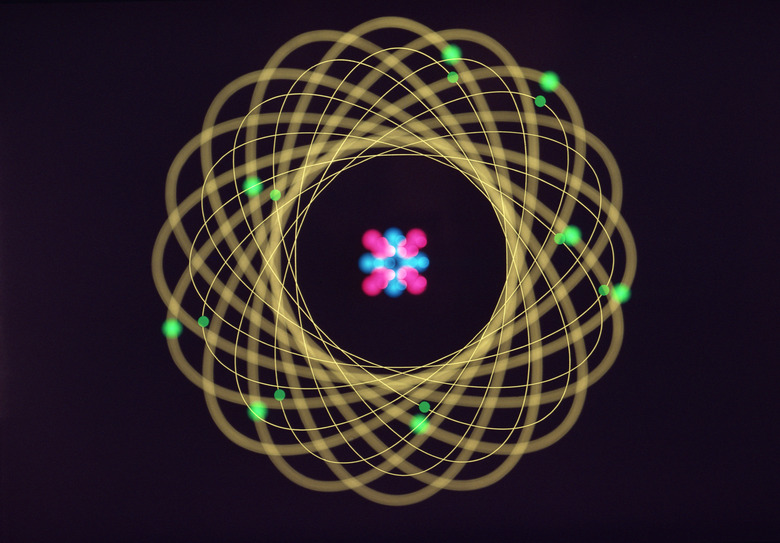How To Make A 3D Nitrogen Atom Model For A Science Class
Every young person has to eventually do it: make his or her first-ever 3D atom model. It is an important part of growing up in the school system because it helps you understand what an atom is and how it is structured. While this may seem useless now, it will come in handy in the future, especially if you plan to attend college. The good news is that it is not difficult at all. It just takes a little hard work and a basic understanding of an atom.
Step 1
Determine how many neutrons, protons and electrons nitrogen has by reviewing the periodic table of elements. According to the table, nitrogen has an atomic number of 7, which means that it has seven protons and seven electrons. In addition, it has an atomic mass of 14, which means it has 14 minus 7 neutrons: seven neutrons.
Step 2
Color seven Styrofoam balls with one marker and seven Styrofoam balls with a different-colored marker. These are the nitrogen atom's protons and neutrons.
Step 3
Build the atom's nucleus by gluing the proton balls and neutron together. Avoid just gluing protons to protons and neutrons to neutrons. Mix it up and ensure the completed Styrofoam collection has a spherical-like shape.
Step 4
Cut a cardboard circle that is at least twice as wide as the Styrofoam-ball nucleus. Cut a circle inside the circle. Leave enough space between the outer circle and inner circle to glue beads onto it. This is the electron orbital.
Step 5
Glue seven beads onto the electron orbital. Spread them around so that they are not all clustered in one spot, but glue them only on one side of the orbital.
Step 6
Poke a hole in the top and bottom of the orbital. Run a string from the top hole to the bottom hole and back to the top hole. Tie a knot and cut off the remainder of the string.
Step 7
Pull apart the two strands of string in the middle of the orbital and slide the nucleus between them. Run tape around the strings and nucleus until they are firmly attached to one another. That finishes your 3D nitrogen atom model.
Things Needed
- 14 Styrofoam balls
- 7 beads
- Different-colored markers
- Cardboard sheet
- Scissors
- String
- Tape
TL;DR (Too Long; Didn't Read)
Feel free to be creative by using different materials, such as tennis balls, ball bearings, etc. Make certain the electrons are smaller than the protons.
Cite This Article
MLA
Saxena, Vivek. "How To Make A 3D Nitrogen Atom Model For A Science Class" sciencing.com, https://www.sciencing.com/make-3d-nitrogen-atom-model-science-class-12043964/. 24 April 2017.
APA
Saxena, Vivek. (2017, April 24). How To Make A 3D Nitrogen Atom Model For A Science Class. sciencing.com. Retrieved from https://www.sciencing.com/make-3d-nitrogen-atom-model-science-class-12043964/
Chicago
Saxena, Vivek. How To Make A 3D Nitrogen Atom Model For A Science Class last modified August 30, 2022. https://www.sciencing.com/make-3d-nitrogen-atom-model-science-class-12043964/
